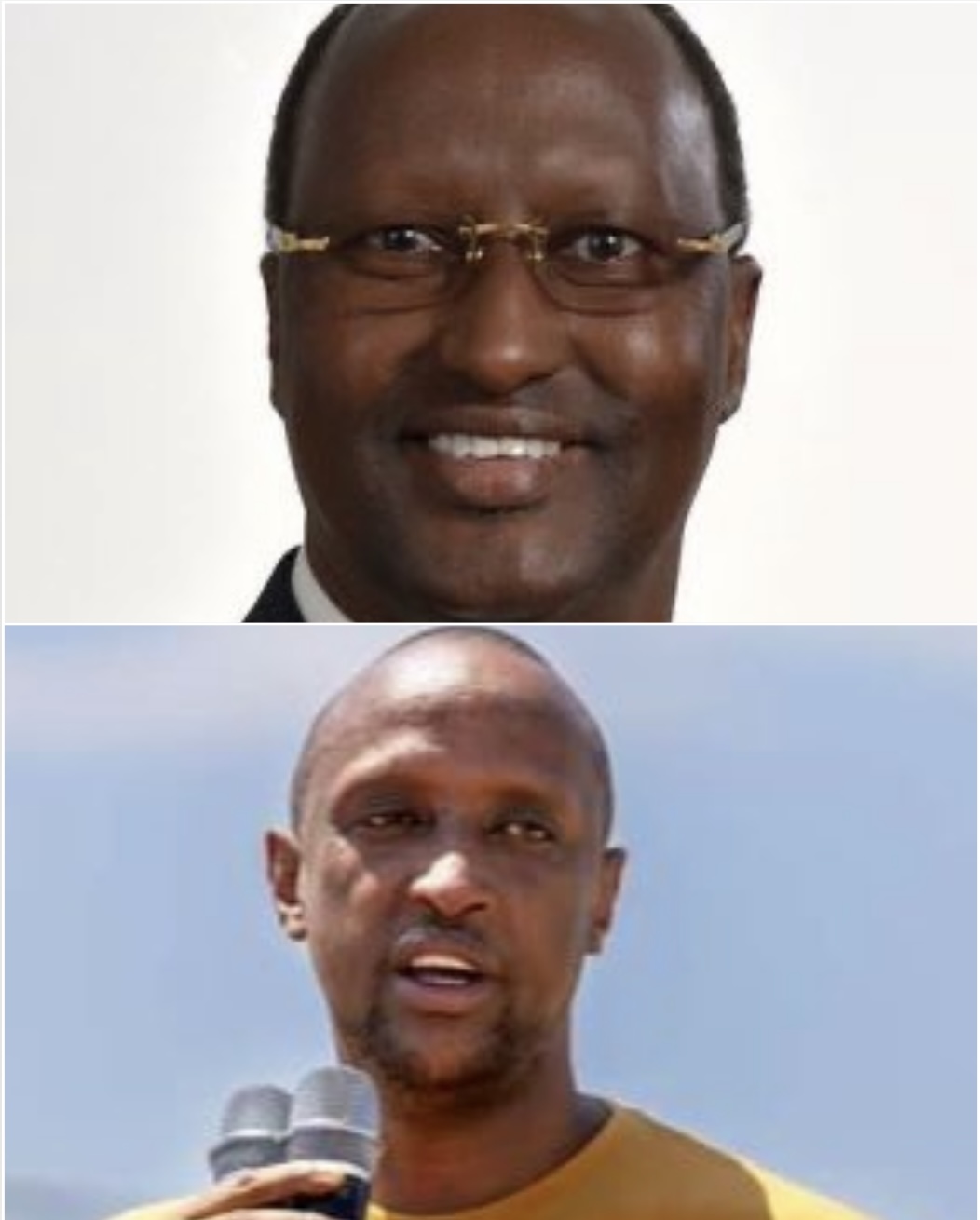Isiolo County, a sprawling arid region in Kenya’s north, holds immense promise as a strategic gateway to the Horn of Africa. With a population of roughly 268,000 (2019 census), it stands as a critical test case for Kenya’s devolution framework, receiving billions in funds to transform healthcare, education, infrastructure, and sports facilities. Yet, successive governors have plundered these resources, leaving the county’s youth disenfranchised and its potential untapped. In February 2025, Isiolo captured national attention when its youth heckled President William Ruto during a public rally, marking a bold escalation in Kenya’s youth-led activism.
This article profiles Isiolo’s past and current governors, examines corruption allegations, details the county’s financial allocations, and highlights the revolutionary spirit of its neglected youth.
Profiling Isiolo’s Governors: A Legacy of Disappointment
Past Governor: Mohamed Abdi Kuti (2013–2022)
Dr. Mohamed Abdi Kuti, a medical doctor turned politician, served as Isiolo’s first governor from 2013 to 2022 under the Jubilee Party. Initially hailed for his professional credentials, Kuti’s tenure was overshadowed by allegations of mismanagement and unfulfilled development promises. Projects like the Isiolo Stadium, a symbol of youth empowerment, remain incomplete despite significant funding. Critics accused Kuti of favoring certain communities, fueling ethnic tensions among Isiolo’s diverse Borana, Somali, Turkana, and Meru populations.
While Kuti avoided direct implication in major graft scandals, his administration faced Ethics and Anti-Corruption Commission (EACC) scrutiny for irregular procurement and ghost worker schemes. In 2018, reports emerged of inflated contracts for roads and health facilities, with funds allegedly diverted through proxies. Kuti blamed limited own-source revenue and delayed national disbursements, but detractors argued his leadership lacked transparency and accountability.
Current Governor: Abdi Ibrahim Guyo (2022–Present)
Elected in 2022 under the Jubilee Party, Abdi Ibrahim Guyo promised to revitalize Isiolo’s development agenda. A former MCA, Guyo campaigned on youth empowerment and infrastructure. However, his administration has been mired in accusations of corruption, nepotism, and fiscal irresponsibility. In May 2025, the Senate Public Accounts Committee grilled Guyo for hiring 36 advisors and 31 chief officers, inflating the wage bill to 47% of the budget – well above the recommended 35% – despite Isiolo’s modest size of two constituencies and ten wards.
Guyo’s tenure has faced multiple EACC probes. In January 2024, five senior county officials, including two chief officers, were arrested over graft allegations involving misappropriated funds. In November 2024, Guyo attributed a bloated payroll with over 1,600 employees, some allegedly ghost workers, to his predecessors, but critics accused him of shirking responsibility. Posts on X in February 2025 reflected growing resident frustration, citing corruption and failure to deliver basic services like water and healthcare. Guyo’s unlawful hiring practices and runaway wage bill have cemented his reputation as a leader prioritizing cronies over progress.
Financial Allocations: A Fortune Misspent
As a marginalized county, Isiolo has received substantial funding through devolution (equitable share), equalization grants, and own-source revenue (OSR) from 2013 to 2025. Based on Controller of Budget (CoB) and National Treasury reports, with estimates for recent years, the county’s total funding over this period amounts to KSh 53.37 billion. This includes KSh 49.3 billion in equitable share, KSh 2.81 billion in equalization funds, and KSh 1.26 billion in own-source revenue.
Breaking it down by year:
- in 2013/14, Isiolo received KSh 2.5 billion in equitable share, KSh 100 million in equalization funds, and KSh 50 million in OSR, totaling KSh 2.65 billion.
- In 2014/15, this rose to KSh 2.8 billion, KSh 120 million, and KSh 60 million, totaling KSh 2.98 billion. The figures grew steadily:
- 2015/16 saw KSh 3.1 billion, KSh 150 million, and KSh 70 million, totaling KSh 3.32 billion;
- 2016/17 had KSh 3.4 billion, KSh 180 million, and KSh 80 million, totaling KSh 3.66 billion;
- 2017/18 brought KSh 3.7 billion, KSh 200 million, and KSh 90 million, totaling KSh 3.99 billion;
- 2018/19 included KSh 4.0 billion, KSh 220 million, and KSh 100 million, totaling KSh 4.32 billion;
- I2019/20 had KSh 4.3 billion, KSh 250 million, and KSh 110 million, totaling KSh 4.66 billion;
- 2020/21 saw KSh 4.5 billion, KSh 270 million, and KSh 120 million, totaling KSh 4.89 billion;
- 2021/22 included KSh 4.8 billion, KSh 300 million, and KSh 130 million, totaling KSh 5.23 billion;
- 2022/23 had KSh 5.1 billion, KSh 320 million, and KSh 140 million, totaling KSh 5.56 billion;
- 2023/24 brought KSh 5.4 billion, KSh 340 million, and KSh 150 million, totaling KSh 5.89 billion; and
- 2024/25 is estimated at KSh 5.7 billion, KSh 360 million, and KSh 160 million, totaling KSh 6.22 billion.
With KSh 53.37 billion, Isiolo could have become a model county. Allocating these funds prudently – based on average construction and operational costs in Kenya, adjusted for arid regions – reveals what could have been achieved.
Approximately KSh 10.67 billion (20%) could have gone to healthcare, funding two referral hospitals at KSh 2 billion each, three Level 5 hospitals at KSh 1.5 billion each, and 20 health centers at KSh 100 million each.
Another KSh 10.67 billion (20%) could have supported education, building 50 primary schools at KSh 50 million each, 20 high schools at KSh 200 million each, and two universities at KSh 2 billion each.
Infrastructure, allocated KSh 12.8 billion (24%), could have delivered 500 km of tarmac roads at KSh 25 million per km and 1,000 km of murram roads at KSh 5 million per km. Streetlighting, with KSh 2.67 billion (5%), could have installed 5,000 solar streetlights at KSh 0.5 million each.
Sports facilities, assigned KSh 5.34 billion (10%), could have built two modern stadiums at KSh 1.5 billion each and 20 playgrounds at KSh 100 million each.
Water and sanitation, with KSh 5.34 billion (10%), could have funded 50 boreholes at KSh 50 million each, 10 dams at KSh 250 million each, and five sewage systems at KSh 300 million each.
Administration and wages, taking KSh 6.14 billion (11.5%), would cover salaries and operational costs, with KSh 0.74 billion (1.5%) for miscellaneous projects.
In reality, Isiolo’s achievements fall woefully short. Healthcare is limited to one referral hospital (Isiolo County Referral Hospital) and a few under-equipped health centers, with no Level 5 hospitals. Education has seen minimal progress, with few new schools and no universities; existing facilities lack resources.
Major roads like Isiolo-Modogashe remain incomplete, and rural roads are often impassable. Streetlights are sparse, far from the potential 5,000. The Isiolo Stadium, a flagship project, languishes unfinished, and modern playgrounds are nonexistent. Water access remains dire, with insufficient boreholes and dams.
This chasm between potential and reality points to systemic corruption, with funds allegedly lost to ghost workers, inflated contracts, and personal enrichment.
Ruto’s Heckling in Isiolo: A Catalyst for Change
On February 7, 2025, President William Ruto faced a public reckoning during a visit to Isiolo for the groundbreaking of the County Aggregation and Industrial Park. As he spoke, enraged youths interrupted with chants of “Ruto must go!” and “uongo” (lies), forcing him to abbreviate his address. Governor Abdi Guyo and Senator Fatuma Dullo tried to quell the unrest, but the crowd’s hostility persisted, with Dullo herself heckled.
Ruto blamed the disruption on drug traffickers, claiming they mobilized youths to retaliate against his administration’s crackdown on narcotics in Isiolo and Marsabit. However, local elders and analysts suggested political orchestration, noting that some leaders skipped a preparatory meeting with Deputy President Kithure Kindiki. Former LSK President Nelson Havi argued Ruto’s provocative remarks inflamed tensions.
The incident prompted a heavy-handed response, with 50 youths arrested between February 7 and 8, 2025. Charged with being drunk and disorderly, 48 were released on February 10 after pleading guilty, raising concerns about police overreach.
Isiolo’s public rebuke of Ruto was a turning point, the first town to challenge him so openly. The incident reportedly deterred Ruto from public rallies, signaling a shift in Kenya’s political dynamics. Building on the June 2024 Gen Z protests, which forced Ruto to withdraw the Finance Bill, Isiolo’s defiance highlighted mounting frustration with unfulfilled promises and elite excess amid economic hardship.
Youth Neglect and the Dawn of Revolutionary Activism
Isiolo’s youth, making up over 60% of the population, have suffered most from corrupt leadership. High unemployment, limited access to quality education, and neglected facilities like the Isiolo Stadium have bred disillusionment.
The May 2025 protests, where youths clashed with police over the stadium’s neglect, underscored their anger at Governor Guyo’s empty promises. Educated but jobless, these young people – many born in the 1990s and 2000s – watch leaders flaunt wealth while basic services falter.
The June 2024 protests, fueled by Gen Z’s rejection of IMF-driven austerity and corruption, struck a chord in Isiolo. Inspired by this movement, the county’s youth are spearheading a new era of activism. Rejecting ethnic and political loyalties, they embrace a “leaderless, tribeless, and fearless” approach, organizing via social media to demand accountability. Their actions – heckling Ruto, protesting for sports facilities, and challenging Guyo’s mismanagement – signal a readiness to escalate. Isiolo’s youth are conducting citizen audits of stalled projects, exposing “white elephant” schemes, and advocating for transparent county spending.
With Kenya’s debt crisis and corruption scandals fueling their resolve, they are poised to elevate their revolution, potentially igniting nationwide change.
Conclusion: A County Poised for Transformation
Isiolo stands at a crossroads. Its KSh 53.37 billion in funds could have built a thriving county with modern hospitals, schools, roads, and sports facilities, but corruption has left it languishing. Governors Kuti and Guyo, tainted by graft allegations and inefficiency, have failed to unlock Isiolo’s potential, leaving its youth enraged. The heckling of President Ruto in February 2025 was a national wake-up call, driven by a generation unwilling to accept broken promises.
As Isiolo’s youth embrace this revolutionary moment, they are redefining dissent. Their courage, amplified by social media and a rejection of tribalism, positions them as leaders of a broader movement. For Isiolo to thrive, it must root out its corrupt elite and empower its youth.
Whether Kenya’s leaders heed this call or face the wrath of a generation ready to dismantle a broken system remains to be seen. Isiolo’s rebellion is just the beginning.

